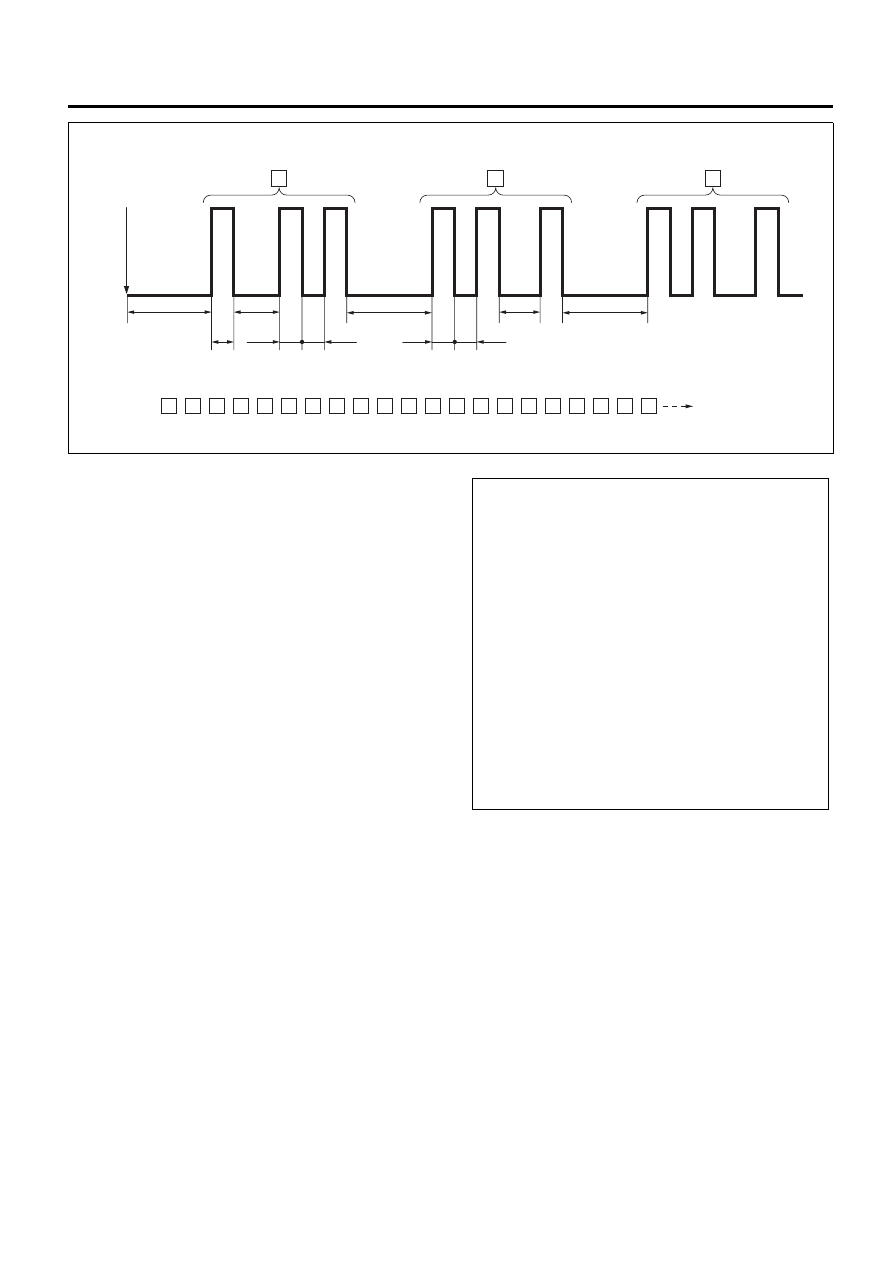Isuzu N-Series. Manual - part 744

Engine Control System (4JH1) 6E-27
Reading Diagnostic Trouble Codes (DTCs) with The
Tech 2
The procedure for reading DTC(s) is used a diagnostic
Tech 2. To read DTCs, use the Tech 2 “Read DTC Info
As Stored By ECU”.
Clearing Diagnostic Trouble Codes (DTCs) with The
Tech 2 or without Tech 2
Do not clear DTCs unless directed to do so by the
service information provided for each diagnostic
procedure. To clear DTCs, use the Tech 2 “Clear DTC
Information”. If there is no Tech 2, history DTCs can
also be cleared after 40 consecutive driving cycles
without a fault.
Tech 2 Scan Tool
Isuzu recommend using Tech 2. Refer to the Tech 2
Users Guide for proper start up procedures.
Operating Procedure
1. Press Enter at start screen.
2. Select Diagnostic > appropriate vehicle
identification > Powertrain > 4JH1-TC.
3. The following table shows, which functions are
used the available equipment versions.
F0: Diagnostic Trouble Code
The purpose of this mode is to display stored trouble
code in the ECM. When “Clear DTC Information” is
selected, “Clear DTC Information”, warning screen
appears. This screen informs you that by cleaning
DTCs “all stored DTC information in the ECM will be
erased”.
Symptom Code
Symptom Code is located under the DTC column. A
parenthetic alphabet or number means identification of
the malfunction. Each DTC includes individual
symptoms, such as DTC P0100 has four symptom
codes (7), (9), (B) and (C). DTC chart is separated
depending on this symptom code.
Example: DTC 21,14 and 23 are stored in set order
Diagnosis start
Example: DTC 21 is stored
Continue
21 21 21 14
3.2
3.2
3.2
unit:second
1.2
1.2
0.5
0.5
0.5
0.5
0.5
14 14 23 23 23 12 21 21 21 14 14 14 23 23 23 12
12
12
21
21
ON
OFF
N6A3814E
F0: Diagnostic Trouble Code
F0: Read DTC Info As Stored By ECU
F1: Clear DTC Information
F1: Data Display
F2: Snapshot
F3: Miscellaneous Tests
F0: Lamps
F0: Malfunction Indicator Lamp
F1: Glow Indicator
F1: Relays
F0: Glow Relay
F2: Solenoids
F0: EGR Solenoid Valve
F3: Engine Speed (RPM) Control
F4: Programming
F0: Program VIN
F1: Lock ECU
N6A3815E